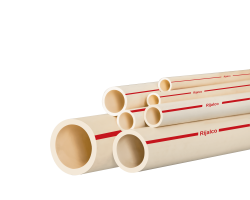How to keep your water tank clean?
Why to clean Water Tank?
According to World Health Organization, routine cleaning of water tanks should be done by all. It
ensures proper drinking water facilities and a reduced chance of disease. Drinking water or
water for other purposes get stored in water storage tanks. Many people use plastic water tanks
and some even use metallic ones. The steps to clean water tanks are similar to routine cleaning
procedures. However, if the tank has been infected or infested with harmful algae and molds,
professionals should be called immediately to clean it. Cleaning water tanks retain the purity and
safety of water and its usage. Tanks store water and therefore remain inherently important to be
cleaned.
When to clean Water Tank?
A good rule of thumb to clean a water tank is once a year. If possible, drinking water storage
tanks can be cleaned twice every year. However, if the tanks have been exposed to algae,
fungi, or microbial infestation, then regular cleaning will not be sufficient. Instead, professional
cleaners should be called to reduce the infestation. Even if we clean it by ourselves, the tank will
have microscopic bacteria that remain harmful. Thus, it is necessary to identify whether your
tank needs a regular cleaning or a professional one. After that, the steps of cleaning water tanks
are very easy and safe. Hence, cleaning tanks are no longer a hassle.
How to Clean Water Tank?
Cleaning water tanks seem difficult but actually, it’s really easy and can be done at home. For
anyone thinking about how can cleaning a water tank is easy, just follow these simple steps.
There are a few specific tools and steps needed. However, upon absence, the optional steps
can be missed or alternatives can be used. Yet, one must not forget the mandatory steps to
properly clean and disinfect the tanks.
Things needed for water tank cleaning
A list of mandatory and optional tools for cleaning tanks:
● Water hose
● High-pressure jet cleaner (optional)
● Sponge
● Disinfectant (Liquid, spray, or soap)
● Clean towel
● Mop or brush with a long handle
● Clear glasses (optional)
● Gloves
● Water vacuum
Steps before cleaning water tank (Preparatory work)
Step 1: First of all, wear glasses and gloves to protect yourself.
Step 2: Disinfecting tools
Secondly, tools like brushes and mops must be disinfected as they will be used for cleaning the
tank. We do not want the microbes to transfer from the mop to the tank.
Step 3: Turning off taps and valves
Thirdly, all taps and valves for water transportation must be closed off. This will prevent dirty
water from escaping.
Steps for cleaning the water tank
After the preparatory work is done, we can get to cleaning the water tank.
Step 1: Identify the water tank
It is important to know whether the tank needs regular or professional cleaning. Also, it is
advised to know whether the tank can handle disinfectants. Plastic tanks are not affected by
them so it is easier to clean them.
Step 2: Drain the tank
First, drain the tank with the direct tap. Many tanks come with attached taps for this purpose. If
not possible, one can use electric pumps to get the water out of the tank.
Step 3: Clean the inside of the water tank
Once drained, the tank can be now cleaned. First, jet cleaning with high-pressure water is
advised. It removes visible dirt from the surface of the tank. Next, it can be cleaned with
long-handled mops without touching it directly with hands.
Step 4: Disposal of Liquid Waste
Disposal of liquid waste while cleaning a water tank is very crucial. These wastes may be
dangerous and can contain harmful microbes. Thus, vacuum cleaning is necessary for it. Put
the hose of the vacuum inside the tank and let it drain the liquid waste. The vacuum collects the
waste. Throw the water in a safe place.
Step 5: Manual Scrubbing
After everything is neat, a manual scrub can be given. However, do not enter the tank yourself.
Call someone with the skill and expertise to enter the tank and clean it. Scrub the walls
thoroughly with soap and water. Do not use harsh chemicals as they may leave a residue that
may mix with the drinking water. Once again, drain the remains.
Step 6: Fill the tank again
Fill the water tank again with new water. By now the tank used for distribution is thoroughly
cleaned.
Steps for disinfecting the storage tank
Disinfecting must be done if the water has been in contact with algae or moss. It is usually the
case for metallic tanks. Sometimes if exposed to sunlight, the plastic tanks also get infested.
Thus, when choosing water tanks, an anti-algae function tank must be selected. Rijalco has
such tanks that repel any algae.
Step 1: Spray or pour the disinfectant inside the tank
The disinfectant should be as prescribed. Do not use harsh chemicals as they can have
unprecedented effects. It is very important to use mild disinfectants if it is a drinking water
storage tank.
Step 2: Run the taps to transfer the disinfectant-ridden water into the pipes
This way, the disinfectant water gets across all pipes and valves. These pipes get cleaned in the
process itself.
Step 3: Smell the tap water to see if it contains disinfectant
Take a glass of water from the tap and smell it. If it smells chemical then it can have the effects
of disinfectant properly.
Step 4: Let the disinfectant sit for four or more hours
It is best to leave the disinfected overnight. It makes the disinfectant’s work more reliable than
leaving for just a few hours. The disinfectant will prevent any micro-bacterial infection or remove
any unseen algae or bacteria infestation.
Step 5: Drain the water and let the empty tank sit for an hour before filling it again
After draining the water, it is not advised to use the water tank immediately, Instead, the water
should be filled again a little later. The water can be drained through all associated taps so that
the disinfectant is washed out.
Steps after disinfecting the tank
Step 1: Check to see if any residue of disinfectant is remaining
Once again, you may want to check the tank.
Step 2: Fill it again with water
If the cleaned tank seems fine, then fill it with water again.
Step 3: Clean the lids and outside body
Lids may be ridden with bacteria or algae too. So, make sure the lids are cleaned properly.
Step 4: Seal the tank properly finally
Sealing the tank will make sure no dust particles or dirt enter the well-cleaned tank.
Things NOT to do while cleaning tank
- Do not enter the tank yourself.
- Do not use harsh chemicals to clean the tank.
FAQs
How do I keep my water storage tank clean?
It is important to regularly cleanse the water storage tanks. People should take time to clean the
water storage tank every year. For specific steps, see the article above.
What is the easiest way to clean a water tank?
The easiest way to clean the water tank is manually. While calling professionals will get the job
efficiently, it may be way too costly. For regular cleaning, doing it by self-using products that can
be found in every household is the easiest way to clean a tank. For a more detailed step-by-step
process, please refer to the article above.
What is the best way to clean a water tank?
The best way to clean a tank is by cleaning it first and then disinfecting it. This way, it will be
visibly clean and prevent any microscopic infection. Thus, it is the best way to clean a water
tank, especially the ones used for drinking water.
How many times should I clean my water tank?
As per recommendations, you should clean your water tank whenever it looks, smells, or tastes
weird. To further prevent this, one can clean the tanks regularly twice a year. However, a
well-cleaned tank may only need routinized cleaning once a year. Thus, it is advised to clean
the water tank at least once a year for non-drinking water and twice a year for drinking water
tanks.
What is the best season to clean the tank?
Summer is the best season to clean tanks. During this season, the water level gets much lower
than in other seasons. Moreover, it is better than winter or monsoon where the weather can get
unpredictable and extreme.






